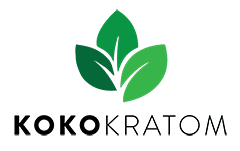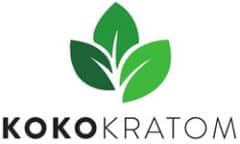A Brief History of Kratom
The beginning of our brief kratom history begins in the first half of the 19th century when the islands of Indonesia were under Dutch control. After the Cultivation System in Java program was established in 1830, the colonial powers sent experienced botanist Pieter Willem Korthals (1807 – 1892) to collect information on the islands of Java, Sumatra, and Borneo.’
Through a series of drawings, measurements, and sensory notes, Korthals became the first in the ‘old world’ to discover the kratom tree. Upon observing its physical characteristics and traditional usage, he gave this evergreen tree the name by which it is now known worldwide: Mitragyna speciosa Korthals. The ‘Korthals’ stands for the name of the botanist and the ‘mitra’ is thought to be named for the flowers’ similarity to a bishop’s mitre or the plant’s association with Mithraic cults.
The Role and Effects of Kratom in Kratom History
Although kratom’s recorded history began with Korthals, the leaves of this rainforest tree had been used medicinally for centuries before the Dutch even knew that Southeast Asia existed. Similar to the way that coca leaves are chewed in the South American highlands, fresh kratom leaves in Thailand, Malaysia, and beyond would be chewed for energy and stamina throughout the day and were also valued as a folk remedy for fever, diarrhea, and as an external poultice for wounds.
Kratom and the Opium Trade
When opium use later became widespread in Thailand, addicts began turning to kratom for relief from the uncomfortable symptoms of withdrawal while enjoying similar soothing effects. At this time in kratom’s history, kratom grew wild around the country and could be sourced from the jungles for free.
The Thai Kratom Ban
Around the time of the Great East Asia War in 1942, the Thai government realized that they were losing a large amount of potential revenue from the opium trade thanks to the availability and popularity of kratom. In 1943, the Kratom Act was passed which banned the planting of new Mitragyna speciosa trees and sanctioned the cutting down of existing trees. The Thai Narcotics Act of 1979 listed kratom as an illegal substance along with cannabis and magic mushrooms. In a positive turn of events, the 2018 Narcotics Act legalized kratom and cannabis for medical use after public hearings showed overwhelming support.
Kratom Restriction in Malaysia
Kratom’s history in Malaysia is somewhat similar to the situation in Thailand, with the sale and possession of kratom being officially illegal since 2003. Despite its official lack of legality, the effects of kratom can be enjoyed by purchasing air ketum or kratom tea from roadside stands.
The Kratom Trade in Indonesia
These laws’if enforced across the region’might have spelled the end of kratom’s history in Southeast Asia. Fortunately, the government of Indonesia took a different approach. As kratom lacked the incredible cultural status in Indonesia that it had held in Thailand and Malaysia, there was no real reason for the national government to ban its use. Instead, this fertile chain of islands decided to capitalize on the kratom movement that was sweeping the globe and became the go-to center for planting and exportation. With kratom sales from Indonesia now representing 95% of the world’s supply and earning the country around $130 million per year, the future of kratom may well lie in Indonesia’s hands.
Source Your Premium Leaf from Koko Kratom
At Koko Kratom, you can benefit from the history of kratom and its ultimate arrival in the United States with our 30-day guarantee and same-day shipping. Even better, we provide independent lab testing with every batch so you can trace potential contaminants and levels of the alkaloids responsible for the effects of kratom. Please get in touch for support with your order while shopping our premium kratom online.
**Not sold for human consumption disclaimer




